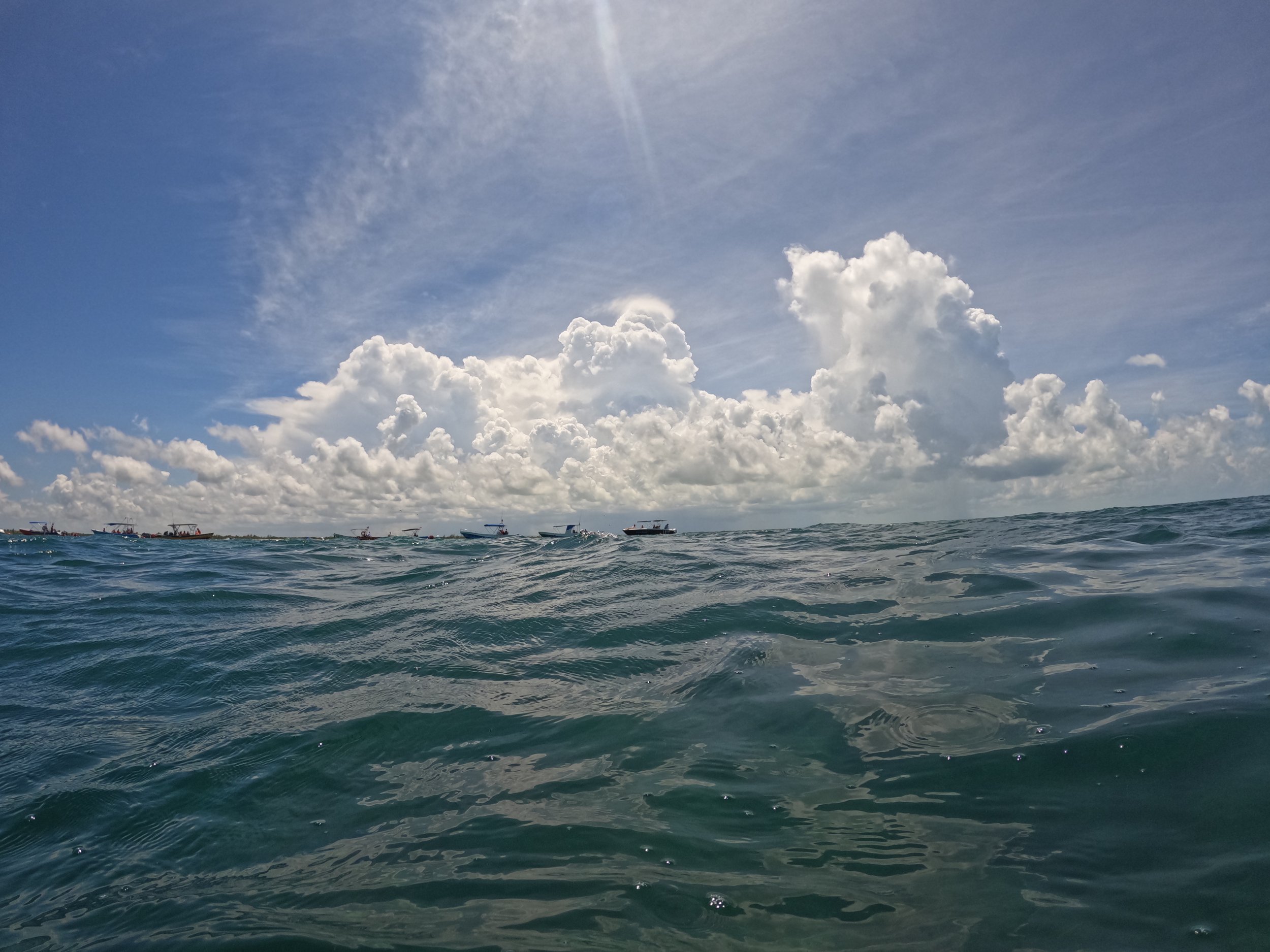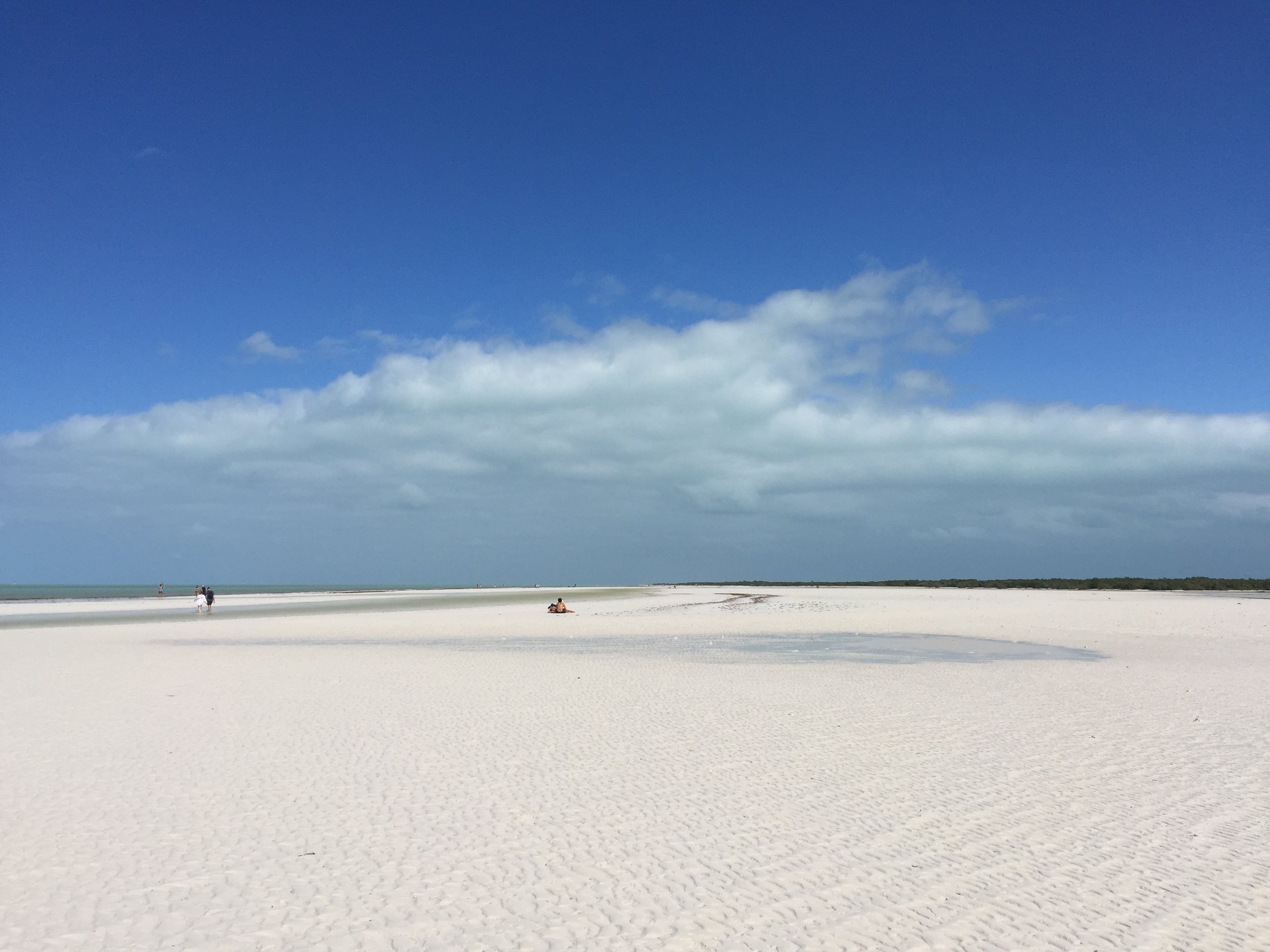Isla Holbox, Mexico
I am going to write about what used to be one of my favorite places in the world. Which is now sadly no longe. I debated as to whether or not to return to this place in an attempt to ‘preserve’ the wonderful memories I had of a once pristine and sleepy paradise. The first time I visited Isla Holbox was seven years ago and it was a a slice of heaven. The beach and coastline was pristine and the water so crystal clear. So clear that the sky and the water mirrored one another as if it was one of the same.
Places like this always seem to exist until they don’t. It’s so wonderful that word gets out and then eventually everyone goes, and the cycle of development continues. I think a lot about destinations of enormous natural beauty and purity. It is nature that draws us to these places in the world. But it is human nature to take and take and suck it dry. And what remains is a ravished former paradise lined with beach clubs blasting music and trash in the ocean. The water in front of the main beach is no longer crystal clear, you can see the effects of pollution and more and more boats have crept up the coastline. The main town has been built up and spread out with trendy Tulum wanabe restaurants, bar and clubs. The streets used to be quiet and peaceful, now the streets are packed with people driving mega golf carts blaring down the roads as if they were in LA.
Mexico has poured an enormous amount of resources into developing the Yucatan peninsula for maximum tourism — drawing on the Cancun tourist to now travel to all parts of the Yucatan reaching to places that used to be considered too far or too ‘adventurous’ to go to. Traveling around the Yucatan after my last visit 5-7 years ago has been sort of a shock. It is nice to see Americans appreciating more of Mexico but it has also transformed places that once had character, charm and culture into soul-less, tourist money-making machines. This is not the fault of Americans although many people will blame American culture, but it is the doing of the Mexican government. Exploiting every bit of the natural resources, beauty and indigenous culture that lies within their country’s borders. It is not deemed ‘good’ nor ‘bad’ as it simply is. But as I travel through Mexico returning to once favorite places it is still hard to see the enormous transformation these places have undergone.
Anyways I digress, and similar to Tulum, I do want to make a point that there is still enormous natural beauty that still exists in these places. And perhaps it’s not about the actual destination, but more about what lies outside and around it.
On to the guide of Isla Holbox. Isla Holbox is now well on the tourist map. It is an island in the northeast corner off the Yucatan peninsula, under the state of Quintana Roo. Like most of the Yucatan peninsula, these lands were formerly occupied by Mayans under the chiefdom of Ekab. Isla Holbox is actually part of the Yum Balam Biosphere Reserve and is supposed to be a protected home to many endangered species of flora and fauna. You visit to experience the ocean and animals.
How to Get There
You take a 20-minute ferry from the port town of Chiquilá. The ferry runs every 30-minutes via two ferry operators: Holbox Express and 9 Hermanos. You can reference the ferry schedule here.
To get to Chiquilá, you can take a taxi, rental car, or ADO Bus from various destinations such as Cancun, Valladolid and Merida. Note that the ADO Bus is no longer down the street from the ferry terminal and you now need to take a moto-taxi which is just 50 pesos. There are ADO buses that leave directly from Cancun Airport, you must take an ADO bus to the town of Cancun, and then connect to another ADO bus that will take you to Chiquilá.
Private cars from Cancun are very expensive and at time of writing it was 3,200mxn. Best to try to pre-book a shared shuttle before arriving. From Isla Holbox to Cancun Airport, a shared shuttle is 350mxn. Visit Holbox Shuttle for more info.
Where to Stay
Back in the day there were just a handful a places in the center of town that you could stay in. Airbnbs didn’t exist and only a few small local hotels and hostels existed. Now there are plenty of options between hotels, hostels, airbnbs and apartments you can rent. This is an extension of the Cancun-Tulum route so the prices are somewhat on par. Accommodation prices are on the high end.
West End / Punta Coco
For this stay, I opted to stay in an eco-airbnb on the west-end of the island near Punta Coco. Which has it’s pros and cons. This end is still nature. It reminds me of what Isla Holbox used to be. However you are 20-minutes removed from town and taxis are very expensive here (150-300 pesos between town and Punta Coco end). As I stayed during the rainy season it gets a bit more difficult to get around as the roads get flooded, and because you are embedded in nature you are surrounded by vicious mosquitos. Punta Coco end is beautiful and I highly recommend during the dry season. If you’re looking to be in nature, for quiet and peace, and to be able to see the stars at night…this is the place for you. The beaches on this end are cleaner and less developed. The swimming is much better here.
In town
You are walking distance to all of the restaurants, bars and shops. You will save money by not having to pay for taxi rides in the evening. However prices might be a bit higher here and there is more noise from bars in the evening.
East End
This is where all of the OG hotels and new hotels are located. They are higher-end resorts and ‘own’ much of the beachfront along this stretch. Hotels stretch from Casa Las Tortugas to Hotel Las Nubes. The stretch in front of Casa Las Tortugas ad up the coast however is not as clean as it once was and is now quite polluted from the nearby dock. This stretch of beach is also incredibly developed now with restaurant and bars blasting music. The end closer to Hotel Las Nubes is quieter and cleaner. And depending on the tides you can still probably walk across the sand bar to journey onwards to Punta Mosquito.
What To Do
Personally, I have come here to appreciate nature and the beautiful animals as the island is a part of a biosphere. I don’t come to Holbox to sit on a beach lounger, although you can certainly do that too.
Swim with Whale Sharks
The primary reason for coming to Holbox imho is to swim with whale sharks. You can do this near Cancun as well but I prefer to do it in Holbox. The season for whale sharks is between May to September, when they pass by the northeast corner of the Yucatan to feed in these waters during these months. It is still an incredible opportunity to be able to see and swim with these creatures as the effects of climate change, over-fishing, tourism and pollution can easily change these migratory patterns so it is a privilege to be able to still experience this. You will see tour operators all over town selling these packages. I booked with Holbox Adventure, they’ve been around for a long time doing these tours. However really any tour you book will likely give you the same experience as all of the boat drivers work together to spot the whale sharks and will radio everyone. Get ready for a bumpy ride. You spend all day out on the ocean. Driving around, everyone is on the hunt to spot whale sharks, but after an hour or a few hours you will likely be able to swim with these animals. They are docile, gentle creatures. Some are enormous and some are babies. The boats circle these poor creatures but they don’t seem to get too stressed and are good natured. They stay up closer to the surface of the water to swim with everyone. It is an incredible experience and you should consider yourself fortunate if you are able to swim with these animals.
Snorkeling & Cabo Catoche
If you go on one of the whale shark tours, they can also take you to snorkel and then have a ceviche lunch at Cabo Catoche. It’s a remote stretch of beach at a point that marks the divide between the Caribbean and the Gulf.
Isla Pasión
Isla Pasión is on the southwest corner of Isla Holbox and you can get there by boat in about 10-minutes. From there, there is an outpost where you can birdwatch and you might see some flamingos along the way.
Isla Pajaros
On the same boat ride they can take you to visit Isla Pajaros which is a small inlet of mangroves home to numerous birds and flamingos.
Yalahau
Yalahau is about 30-minutes away by boat and is a small lagoon or spring of clear waters that used to be known as a ‘fountain of youth’ as it was reported to have healing properties.
Punta Mosquito
Punta Mosquito is a point on the northeast corner of Isla Holbox, accessible to visitors by foot or boat. You can cross the sandbar located in front of Hotel Las Nubes and walk up the coastline to reach this remote stretch of beach.
Punta Coco
Punta Coco is a point on the northwest corner of Isla Holbox and can be reached by golf cart or walking along the beach to the point. Not as remote but it is a nice alternative to the more built up beaches closer to town.
Bioluminescence
In the evening you can visit this bay on the western end of the island to see the bioluminescence. You can go by golf cart on your own or with a tour if you desire.















